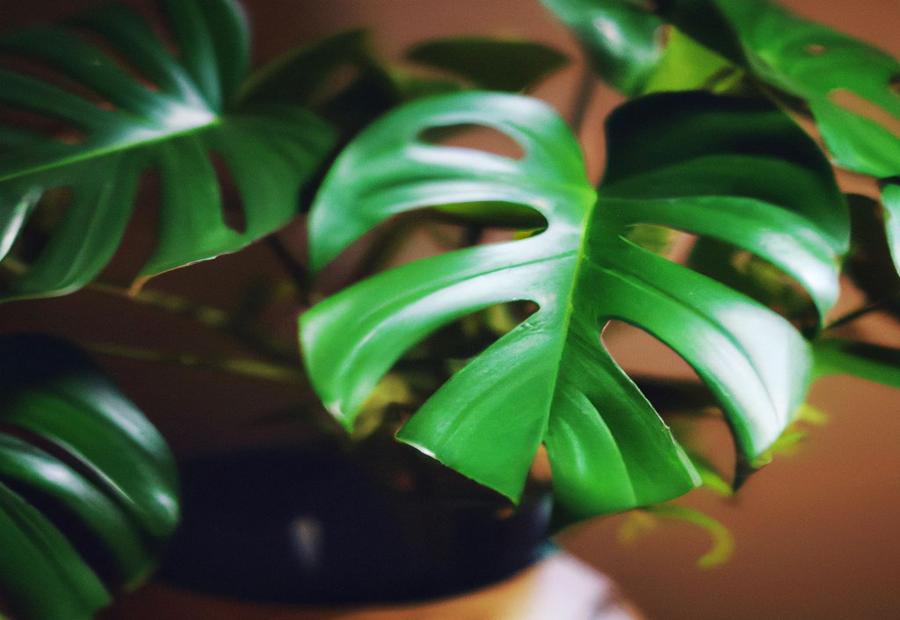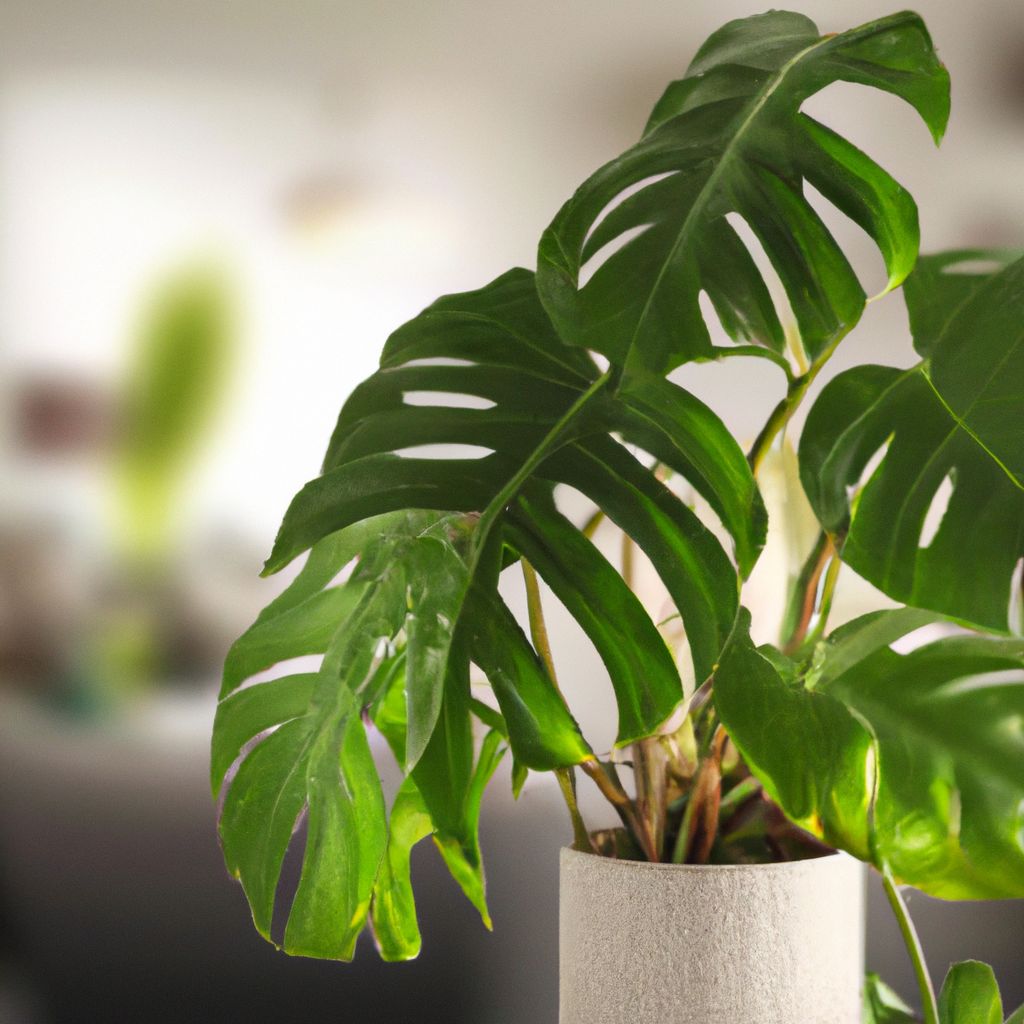Monstera plants, also known as Swiss cheese plants, are popular indoor plants loved for their large, beautiful leaves.
If you have a Monstera plant or are considering getting one, it’s important to understand how big these plants can grow and how to choose the right pot size for their optimal growth.
In this article, we will explore the factors that affect the size of Monstera plants and provide guidance on selecting the appropriate pot size.
We will also discuss what happens when Monstera plants outgrow their pots and how to repot them.
We will share some helpful tips for maintaining the healthy growth of Monstera plants, ensuring that they thrive in your indoor space.
So, let’s dive in and learn all about the sizing requirements and care tips for propagating Bird of Paradise plants.
How Big Can Monstera Plants Grow?
Monstera plants have captivated many plant enthusiasts with their impressive size and striking foliage. But just how big can these plants actually grow? In this section, we ll uncover the factors that influence the size of Monstera plants. From environmental conditions to genetic traits, we’ll explore the elements that contribute to the growth potential of these popular tropical houseplants. Get ready to delve into the fascinating world of Monstera plants and discover what determines their ultimate size.
Factors Affecting Monstera Plant Size
The size of Monstera plants can be influenced by several factors, including:
- Light: Monstera plants thrive in bright, indirect light. Insufficient light can result in slower growth and smaller foliage.
- Watering: Proper watering is essential for healthy plant growth. Overwatering or underwatering can stunt growth and limit the size of the plant.
- Temperature: Monstera plants prefer temperatures between 65-85 F (18-29 C). Extreme temperatures can hinder growth and affect overall plant size.
- Fertilizer: Applying a balanced fertilizer can promote healthy growth. However, excessive fertilizer can lead to lush foliage but limited size.
- Pot size: The size of the pot can impact the plant’s growth. A larger pot provides more space for the roots to expand, allowing the plant to grow bigger.
Pro-tip: If you want to encourage larger growth in your Monstera plant, ensure it receives adequate bright, indirect light, water it appropriately, maintain optimal temperatures, fertilize moderately, and consider repotting it into a larger pot when it outgrows its current one.
Choosing the Right Pot Size for Monstera Plants
When it comes to Monstera plants, choosing the right pot size is crucial for their growth and overall well-being. In this section, we’ll dive into the considerations for pot selection, uncovering key factors that determine the ideal pot size for your Monstera. Get ready to discover the ins and outs of providing your Monstera with the perfect pot, ensuring optimal health and thriving greenery.
Considerations for Pot Selection
When considering pot selection for your Monstera plant, it is important to keep these factors in mind:
| Size: |
By considering these important factors, you can choose the perfect pot for your Monstera plant that not only supports healthy growth but also adds a touch of aesthetic appeal to your space.
In the history of gardening, the choice of pots for plants has evolved significantly. Ancient civilizations favored clay pots for their ability to regulate moisture levels and prevent water stagnation. With advancements in pottery techniques, materials like terracotta and ceramic were introduced, expanding the options for plant enthusiasts. Today, the availability of plastic and decorative pots offers a wide range of choices for plant owners to showcase their plants while ensuring their well-being. So, next time you’re selecting a pot for your plant, take these considerations into account and embrace the rich history of pot selection in the world of gardening.
What Happens When Monstera Plants Outgrow Their Pots?
When Monstera plants outgrow their pots, several things can happen. Firstly, the roots may become root-bound, meaning they have filled up the entire pot and have nowhere else to grow. This can restrict the plant’s ability to absorb water and nutrients, leading to stunted growth. Secondly, the plant may start to show signs of stress, such as wilting leaves or yellowing foliage. This is a clear indicator that the plant needs a larger pot to accommodate its increasing size. Lastly, if the plant is not repotted, it may become unstable and may topple over. This can result in damage to the plant and its surroundings.
To avoid these issues, it is important to regularly monitor your Monstera’s growth and repot it when necessary. A general rule of thumb is to repot the plant every year or when you notice that the roots have filled up the pot. When repotting, choose a pot that is one size larger than the previous one to allow room for the plant to grow. Make sure to use well-draining soil and water the plant thoroughly after repotting.
In ancient folklore, it was believed that when Monstera plants outgrew their pots, they would bring good luck and prosperity to the owner’s home. People would eagerly await the day when their Monstera would outgrow its pot, as it was seen as a sign of abundance and growth. This belief has been passed down through generations, and even today, many plant enthusiasts consider it a fortunate event when their Monstera plants outgrow their pots. It is a beautiful reminder of the natural cycle of life and the rewards that come with nurturing and caring for a plant. So, if you have a Monstera plant that has outgrown its pot, embrace this moment and delight in the blessings it brings.
How to Repot a Monstera Plant?

Photo Credits: Allotinabox.Com by Russell Miller
Looking to give your Monstera plant a new home? In this section, we’ll explore how to repot a Monstera plant for optimal growth and health. Get ready to roll up your sleeves as we dive into the step-by-step process of repotting, ensuring that your Monstera plant thrives in its new pot. So, grab your gardening gloves and let’s get our hands dirty in this exciting journey of repotting a Monstera!
Steps for Repotting a Monstera Plant
To repot your Monstera plant, follow these steps for repotting a Monstera plant:
- Choose the right time: Look for signs that your Monstera plant needs repotting, such as roots coming out of the drainage holes or the plant becoming top-heavy.
- Select a larger pot: Choose a pot that is one or two sizes larger than the current one to provide room for the plant’s growth.
- Prepare the new pot: Place some gravel or small rocks at the bottom of the new pot to improve drainage.
- Remove the plant: Gently remove the Monstera plant from its current pot, taking care not to damage the roots.
- Loosen the roots: Gently loosen the roots with your fingers to help the plant adjust to its new pot.
- Place in the new pot: Position the Monstera plant in the center of the new pot, making sure it is at the same depth as before.
- Fill with fresh soil: Fill the pot with well-draining potting soil, pressing it gently around the roots to secure the plant.
- Water thoroughly: After repotting, water the plant thoroughly to help settle the soil and hydrate the roots.
Remember to place your repotted Bird of Paradise plant in a spot with proper lighting and provide the necessary care for healthy growth.
By following these steps, you can ensure your Monstera plant has enough space to flourish and continue to thrive in its new pot.
Tips for Maintaining Healthy Growth of Monstera Plants
Here are some tips for maintaining healthy growth of Monstera plants:
- Provide proper lighting: Monstera plants thrive in bright, indirect sunlight. Place them near a window where they can receive filtered light.
- Ensure proper watering: Water Monstera plants when the top inch of soil feels dry. Avoid overwatering as it can lead to root rot.
- Maintain humidity: Monstera plants prefer high humidity. Mist the leaves regularly or place the pot on a tray filled with water and pebbles to increase humidity.
- Use well-draining soil: Plant Monstera in well-draining soil that retains some moisture but doesn’t become too soggy.
- Provide support: Monstera plants are climbers, so provide a moss pole or trellis for them to climb on. This will encourage healthy growth and allow the leaves to develop their characteristic fenestrations.
One time, a friend of mine had a Monstera plant that wasn’t growing well. She realized that it was because the plant was not getting enough sunlight. She moved it to a brighter spot near a window, and within a few weeks, the plant started to show signs of healthy growth. It just needed the right amount of light to thrive!
Frequently Asked Questions
What is the importance of pot size for Monstera plants?
The size of the pot is important for Monstera plants as it affects their health and growth. Choosing the right pot size ensures proper root development and prevents issues like overwatering or restricted growth.
Should I go up one pot size when repotting a Monstera plant?
Yes, it is generally advised to go up one pot size when repotting a Monstera plant. This allows the roots to have enough room to grow and promotes healthy growth.
What are the drawbacks of using a pot that is too large for a Monstera plant?
Using a pot that is too large for a Monstera plant can cause issues like overwatering and root rot. The excess potting mix takes longer to dry out, leading to soggy roots and potential damage to the plant.
Which pot materials are recommended for Monstera plants?
Plastic pots are best for smaller plants, while terra cotta pots can be beneficial for those who tend to overwater. Glazed ceramic pots provide stability and retain more moisture, which is beneficial for larger, root-bound plants.
Can pots with attached saucers be used for Monstera plants?
Pots with attached saucers can drain slowly and make watering messy. It is better to use a separate saucer to ensure proper drainage and avoid overwatering.
Are self-watering pots suitable for Monstera plants?
No, self-watering pots are not recommended for Monstera plants as they need to dry out between watering. These pots can lead to overwatering and root rot.

